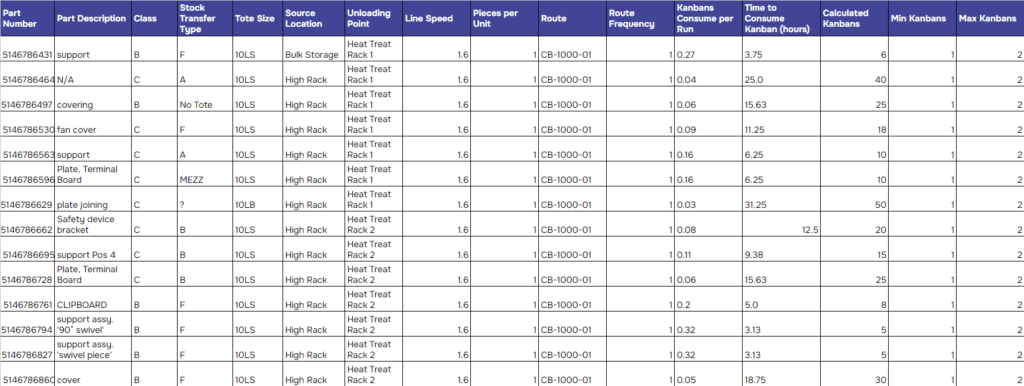Many logistics teams, irrespective of industry, are realizing the benefits of introducing a lean material-handling system to their business. The inability to maintain control of inventory and production line downtime due to delayed part delivery are issues that haunt many logistics departments. It’s a daunting task, making the transition to lean, but knowing where to start will make the process a lot more palatable. Building a Plan For Every Part (PFEP) is the first stop on the way to an efficient, lean warehouse.
What is a PFEP?
A PFEP is a living, breathing document (typically an Excel spreadsheet) that consolidates all pertinent information regarding parts used in the assembly process.
What information should be included in a PFEP?
These documents are meant to be flexible. You can define what information is important to ensure streamlined part flow throughout the value stream and then easily adjust as you go.
And like any major undertaking, you should launch a pilot PFEP first. Base it on one product or one production line and adjust the information captured in the document as required.
Once your PFEP template is refined, you’re ready to implement it facility-wide. To maintain the integrity of your PFEP, a “PFEP owner” should be appointed. This individual is typically a logistics engineer.
All employees should have access to view the information in the PFEP, but all changes should flow through the owner. Changes to the PFEP can be suggested through a standard form that requires a series of approvals before the PFEP owner updates the document. With this process in place, your PFEP will remain updated.
With your PFEP established and properly maintained, the real transition to lean begins. Component supermarkets, material delivery routes, and Kanban signals can now all be established with the information you’ve gathered in your newly created PFEP. Additionally, you’ll have all critical data regarding parts in one central location, making sorting parts by supplier or storage location a breeze. If you’re thinking about overhauling your warehouse and don’t know where to start, reach out to us at Allied Logistics. We’d love the opportunity to help guide you and your team.

